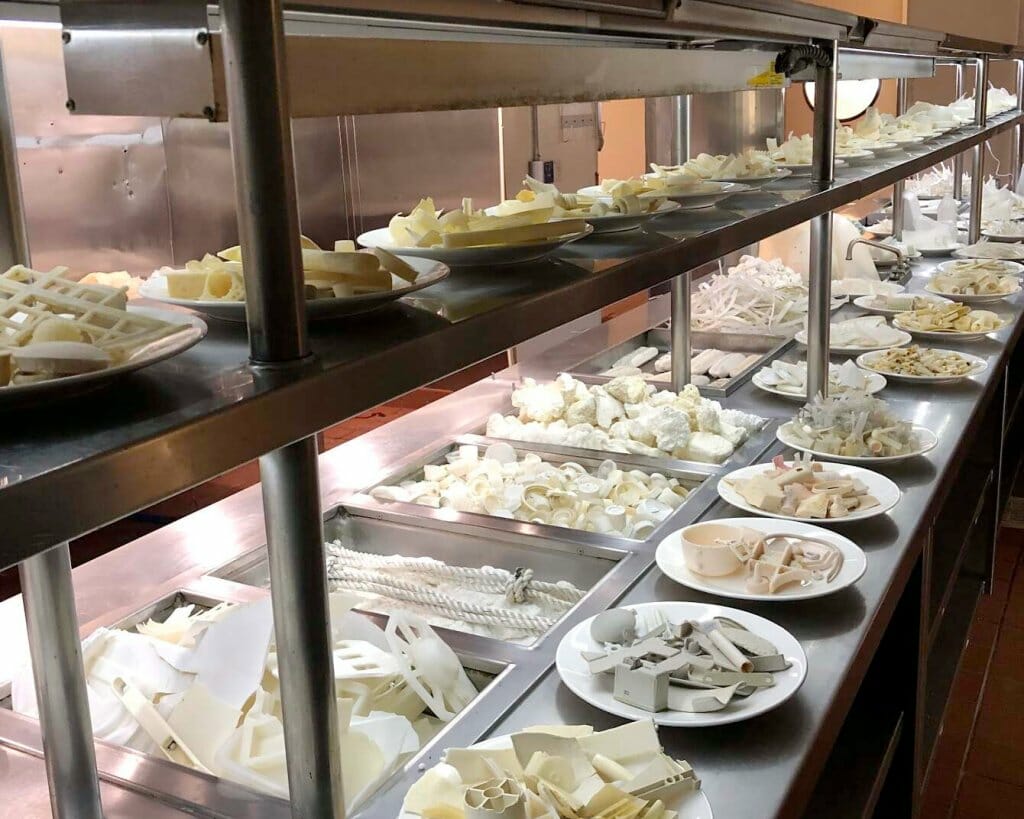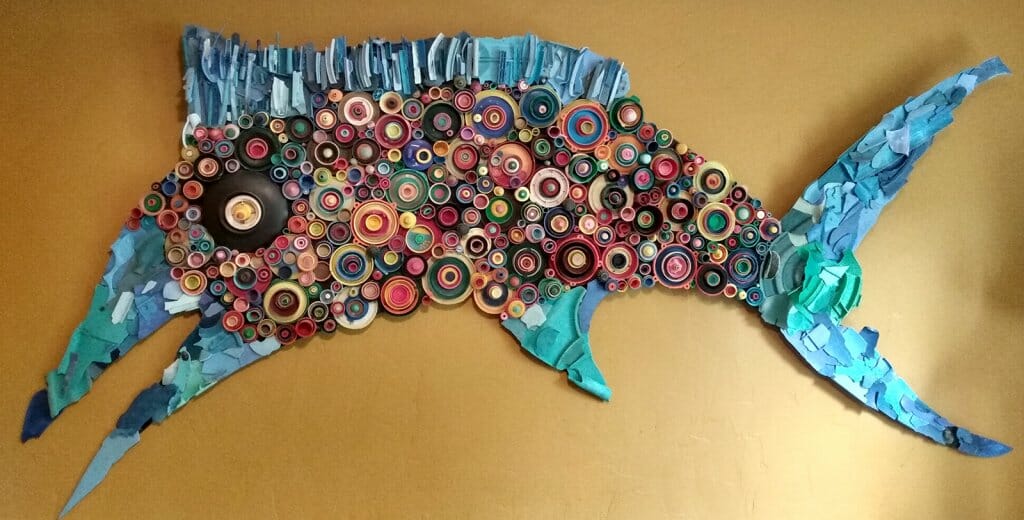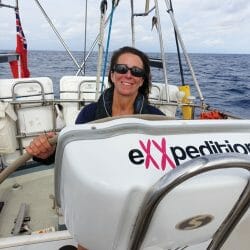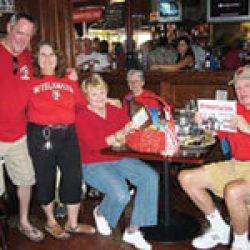One Word: Plastics
Richard MFA’73 and Judith Lang turn found objects into artistic statements about pollution.

The Langs have picked up more than two tons of plastic trash from a single beach. Their art reminds us that the stuff we discard often returns to us as microplastics in our food. Photos courtesy of One Beach Plastic
It looks remarkably like pasta in different shapes and sizes arranged on many white ceramic plates, but it’s actually an artwork composed of white toothbrushes, eyeglass frames, toys, hair curlers, container fragments, and other plastic trash. Richard Lang MFA’73 created For Here or to Go (above) as a jarring reminder that the stuff we discard often returns to us as microplastics in our food.
Another artwork, a large, multicolored fish with vivid blue fins and tail (below), turns out to be composed of bottle caps in different colors and sizes. Yet another, Ghost Net Monster, is made from more than 450 pounds of fishing nets and other plastics found inside the stomach of a dead whale that washed up on a beach.
Lang and his wife, Judith Selby Lang, began picking up plastic trash on the beach near their home in Marin County in Northern California in 1999. Then more. And more. Sorting it by color and shape, the couple ultimately picked up more than two tons of plastic trash from a single beach, Kehoe Beach, on the Point Reyes National Seashore, and started converting it to art installations. The pair fittingly call themselves One Beach Plastic.
Lang’s awareness of ecological problems dates back to his MFA days at the UW, when he won a grant for materials and a stipend to build a sculpture on Lake Mendota’s shore.
“I felt bad about using all those new materials, so I decided to make my exhibit using only what I could glean from scraps gathered in other grad studios. I also chose to make one thing each day,” he says. The found objects became his Palace at 4 AM.
“Do the next thing” is Lang’s motto. He explains how this has underpinned his entire life, with each step organically flowing from whatever he’s currently doing. He applies it to his methodology as an art teacher; the photography and printmaking gallery/ studio that he and Judith own in San Francisco; work as an environmental artist after retirement in 2016; the creation of an art park next to his house in Forest Knolls, California; and his marriage and parenting. “DNT, as I call it, coupled with my other motto, ‘The ball is always in your court,’ is a happy and fruitful way to live a life,” he says.
The Langs’ art is displayed at museums and research centers from Zurich, Switzerland, to Hong Kong to Hamburg, Germany. For more images, visit beachplastic.com.
Published in the Summer 2023 issue




Comments
No comments posted yet.